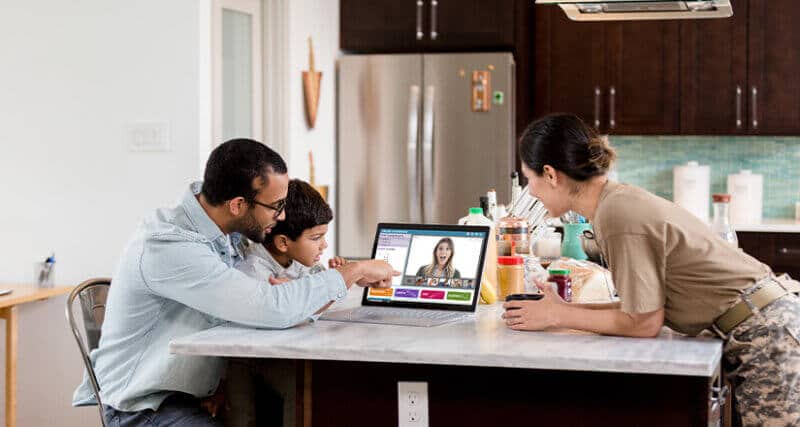Teacher Parent Partnerships: How a Powerful Podcast Changed My Thinking
I was going for an early morning walk the other day, which is one of my strategies for staying sane right now. I usually walk to music, but since we’re gearing up for school to start again, I have been mixing in some education-related podcasts. On this particular morning I listened to one that really inspired me. I was so into it that, without even realizing it, I was responding aloud to what was being said. People in my neighborhood probably thought I was a crazy person.
Have you ever completely geeked out over a teacher blog or podcast like that? Like you are reading or hearing things that are making you shout “YES! EXACTLY!”?
The podcast that I geeked out over was a conversation from May with Zaretta Hammond on Vrain Waves. Zaretta Hammond is the author of the book Culturally Responsive Teaching & The Brain and a woman on a mission to help schools recognize and dismantle systems that disenfranchise specific students (especially those of color and those who are bilingual) and build more equitable systems in their place that empower all learners.
One of the pillars of Culturally Responsive Teaching (CRT) is forming deep learning partnerships with families. Unfortunately, the Spring 2020 shutdown exposed the ugly truth to many schools and teachers that we did not have those deep partnerships in place with some families. Now as we face down another several months of online learning in my school and in schools across the country, we know that the need to build them is more crucial than ever.
But how? It’s been a question on my mind a lot lately. As I listened to the podcast and then did some subsequent research, I realized the process of building learning partnerships during periods of online learning goes so much deeper than just communicating each week to families what students should be working on and offering specific feedback on how they are doing on that work (though both are important). It goes so much deeper than choosing an easy-to-use app to communicate like Remind or Marco Polo or Talking Points. Really, it starts at the beginning with how we organize our lessons and learning activities.
Zaretta Hammond based much of her book on the neuroscience of how people learn, and her core ideas are that the brain is a learning machine, and all kids are natural born learners. It doesn’t matter their socio-economic status or ethnicity or past experiences, ALL kids are natural born learners. They may need to employ different strategies or need more support to learn, but they all have that innate curiosity and ability to learn. It’s our job as teachers to spark their intellectual curiosity and help them become more independent learners.
So as we approach online learning this fall, one of the main things teachers should consider is how they are scaffolding their online learning activities to meet the standards but still allow room for intellectual curiosity and student choice. If this isn’t being done, building learning partnerships will inherently be more difficult.
When Hammond expressed these ideas, I let out my first “Yes!” Her words echoed back to conversations I’ve been having with colleagues recently about paring down their curriculum and focusing on the core concepts and skills they need to teach students in order to meet the standards, their “hills to die on,” so to speak. If we try to deliver a jam-packed curriculum online without leaving space for student choice or personal interests, we’re setting ourselves (and parents and students) up for a difficult experience.
Now here is where the podcast really got me: Hammond said that if we instead use our curriculum to tap into what students are curious about, we open the opportunity to collaborate and even co-create with students and parents. She brought up the idea of deploying two “get to know you” surveys at the start of the year, one to students AND one to parents. We can learn from students and parents alike what they are good at. We can ask what their hobbies are, and what they’re passionate about. Once we know this information, we can use it to do much more than just offer suggestions for topics students can write about or complete projects on. We could use the information to invite parents to come to our virtual classroom as guest experts. If parents are working during the day, we could pre-record a session with them. We can also use the information to offer specific ways parents can help adapt projects or activities to connect to their child’s interests. For example, if a parent loves to bake, and their child is studying fractions, the parent could use measuring cups and a baking recipe to reinforce the learning.
As I listened I thought, “Why don’t I do that?!” I’m now curious about how I can tap into the knowledge and skills of my parents this year.
Finally, Hammond offered important suggestions for helping parents of struggling students. You’ve probably heard the saying, “Maslow before Blooms.” This saying takes on even more significance in our current situation. We’re still in the middle of a global pandemic. Protests are still raging all across the country. We have hurricanes, and derechos, and wildfires to contend with. Many people remain out of work, and families are struggling financially. People are so stressed out. If a student is not completing work online, when we call the family we can’t lead with the list of things the student needs to do. Instead, our first questions should be
How are you?
What do you need right now?
What can I do to support you?
Connecting families to the resources they need is the first step, and those resources may extend beyond the school. It is only once basic needs are met that we can talk about strategies to encourage students to become more independent learners, since as I mentioned before, this is ultimately a teacher’s goal. As we start this conversation we can also ask and affirm what parents are already doing that is working for the student before we dive into what they should do. Hammond pointed out that parents are their kids’ first teachers, and they often know good strategies for supporting learning without even realizing it.
I got home from my walk that day with all of these ideas swimming in my head and immediately jotted down notes that have become this blog. I hope they are swimming in your head after reading, and that you feel more empowered to support, collaborate with, and even co-create with your families this year. If we do this, I know our journey in virtual learning will be a more fruitful one.





